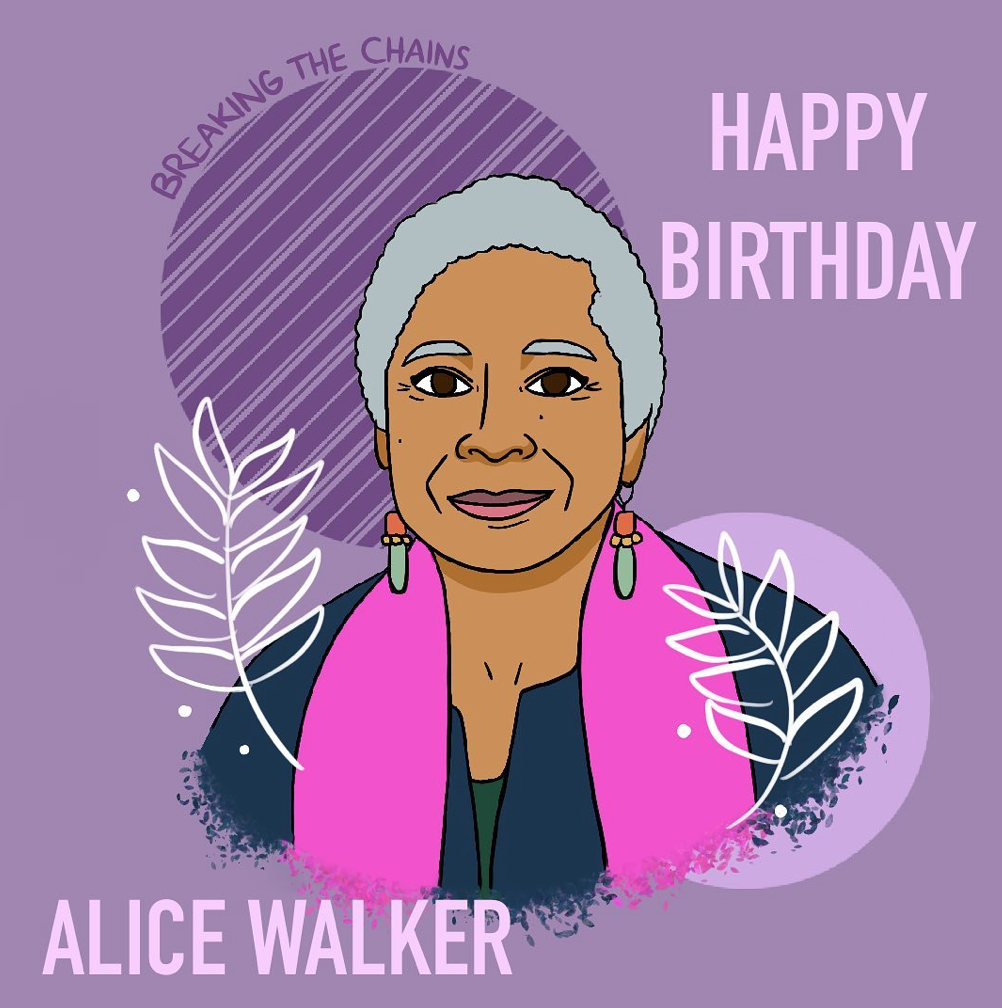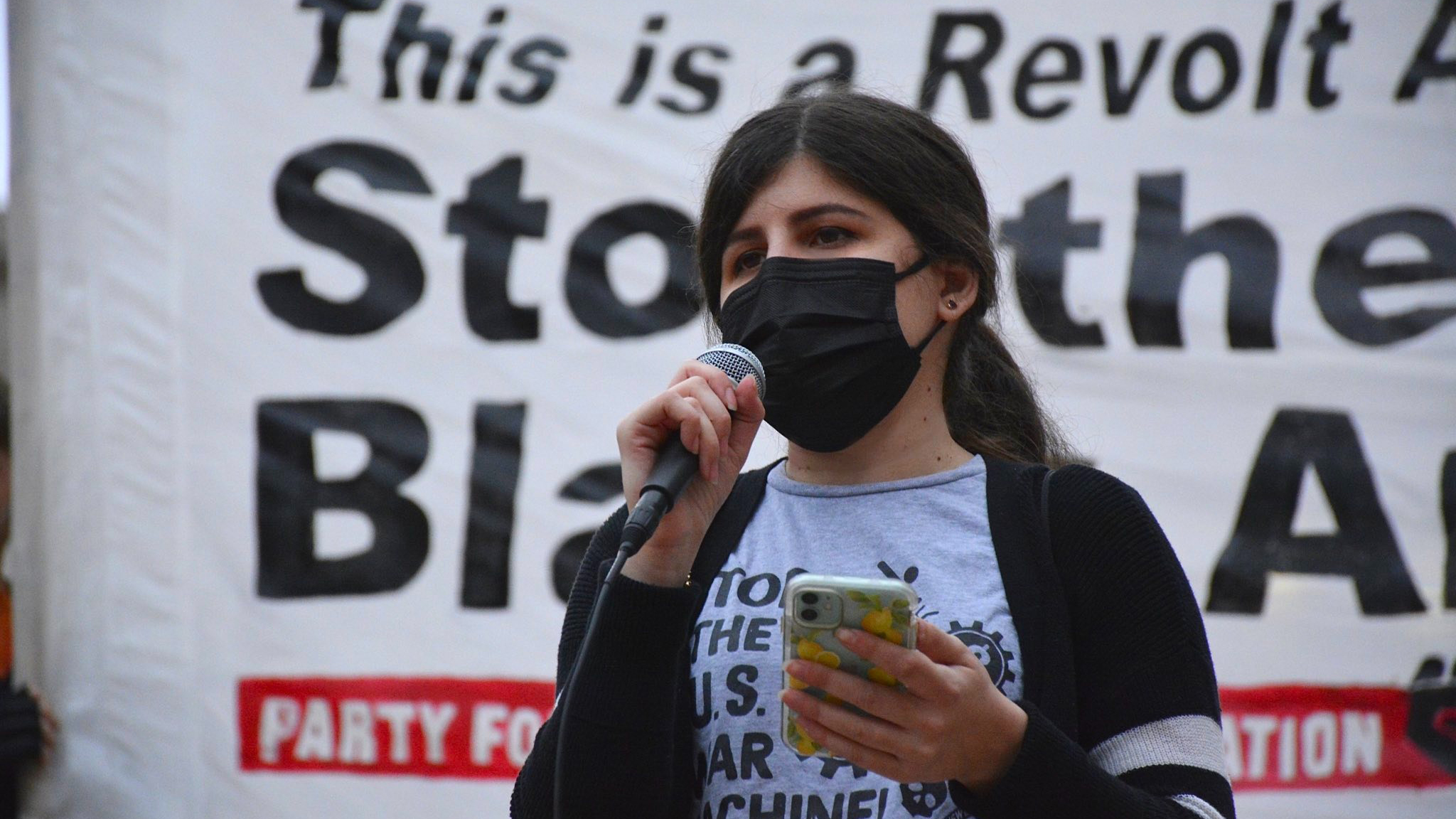Carolina Vega, a young Cuban-American artist based in Los Angeles, recently contributed to the Vital Lines/ Líneas Vitales exhibit, organized by the Peoples Forum. The exhibit combined the talents of six Cuban artists and six US artists, drawing inspiration from six themes: liberation, peace, friendship, sovereignty, struggle, and future.
The co-director of The People’s Forum, Claudia de la Cruz, described how the art exhibit Líneas Vitales, launched virtually on January 28, seeks to overcome the growing rift between Cubans and people in the US:
“As the U.S intensifies its political, economic, and ideological attacks against the Cuban revolution, it is vital for those of us living in the U.S. and engaged in the struggle against systems of oppression and exploitation to see our fight as part of a historical international fight against capitalism and imperialism.
In the spirit of resilience, solidarity, and comradeship, The People’s Forum has paired six Cuban artists and six US-based artists to co-create artwork based on themes connected to the life, energy, and legacy of the Cuban revolution.”
As the United States intensifies its economic war against Cuba, people in the US have been increasingly exposed to negative propaganda about the Cuban revolution. Most recently, the United States used protests by the Cuban people on July 11 as an excuse to continue Washington’s 60-year push to overthrow the Cuban government.
By the end of July, most news outlets in the US had framed the day-long protests in Cuba as a large-scale anti-regime popular movement, while the Biden administration released a “fact sheet” containing several false claims about Cuba. The rift between people in the US and Cubans seemed to grow ever larger.
It is within this context that the Vital Lines/Líneas Vitales Exhibit was conceived. The exhibit’s coordinators Reynaldo García Pantaleón and Hannah Priscilla Craig brought together Cuban and US-based artists who were invited to “collaborate, discuss, and debate across borders within their creative processes.”
As described by Carolina, “the United States is constantly thinking about the end of Cuba. So I wanted to create media that shows the continuation of Cuba.”
Carolina Vega told us more about her piece, how she created it, and what revolutionary art can do for the Cuba solidarity movement.
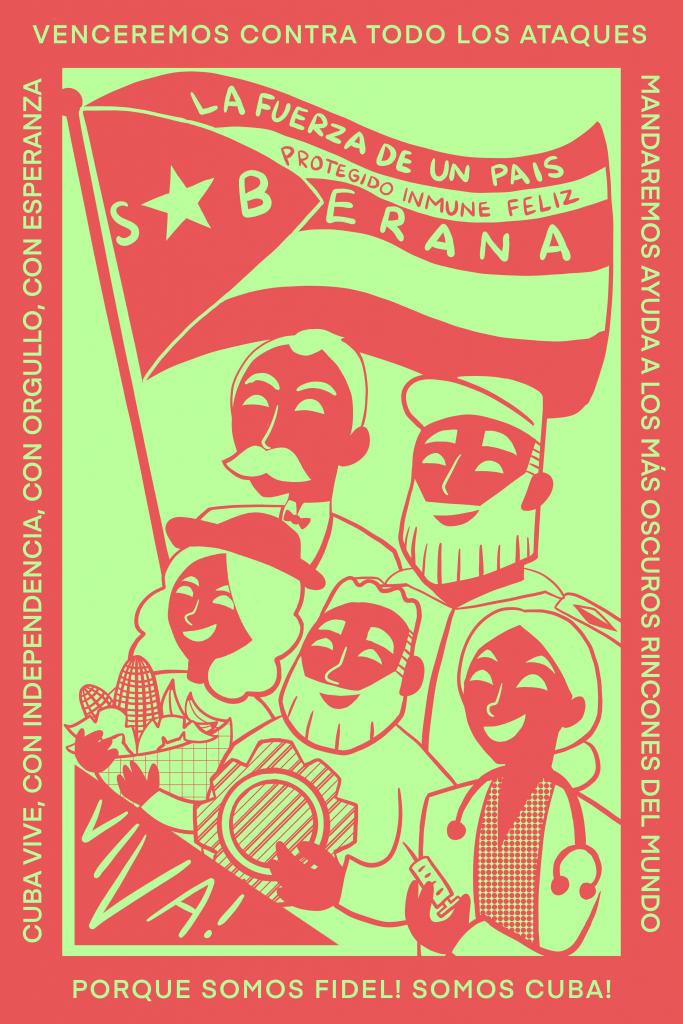
Peoples Dispatch: Could you start by telling me a bit about your background and the piece that you created?
Carolina Vega: So I was actually born in Cuba, and I immigrated to the United States during the special period in the 90s, due to the economic hardship from the sanctions, especially after the fall of the USSR. The economy was very bad at the time and my family was struggling to feed themselves. I came to the United States as a child, and I have lived in the Los Angeles region for my entire life.
Now I am a member of the Party for Socialism and Liberation (PSL). I joined a little bit after the Black Lives Matter protests here in Los Angeles. I wanted to do something for my community, and I was feeling very tired of the conditions that we were living in with COVID, police brutality, mass unemployment. I felt like something needed to change, and that we needed to live in a different world.
After that, I became an organizer. And it was through organizing that then my relationship with my background in Cuba was nourished, because when I started growing up here, I constantly heard so many bad things about Cuba. It even made me feel embarrassed or ashamed to even call myself a Cuban. I felt angry towards Cuba, because I didn’t understand why Cuba was suffering so much. Growing up, no one explained imperialism to me, so later when I was in adulthood as an organizer, that’s when I really started to connect the dots. I realized how far Cuba has come in terms of human rights, civil rights, and democracy, how it’s so advanced.
But at the same time, [Cuba] is constantly under attack with sanctions. So through that, I came to an understanding of the importance of Cuba’s revolutionary history, and socialism, and why we have to fight to protect it.
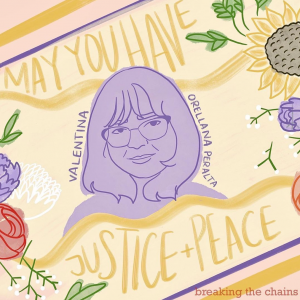
When I made my piece, my theme was sovereignty. I wasn’t sure where to start. But I knew that Cuba had recently developed the vaccine Soberana, which means sovereign, and I thought I should make art that is related to the vaccine. Because here in the United States, and particularly California, COVID rates have been so high. And you start to see the difference between living here and what it’s like for people living in Cuba who have access to all this health care, free health care, who have been more protected by their government during a pandemic than people here in the United States. I wanted to emphasize how much has been accomplished, and how Cuba has still been able to keep going exactly because the government protects its own people, especially with their own vaccines.
On the flag, I wrote “La fuerza de un país, protegido, immuno, feliz”. That’s the slogan for the vaccine. I put it on the Cuban flag to represent that Cuba’s success extends beyond the vaccine. One of the main reasons that I also drew other people in the artwork, like the nurse holding the syringe and people holding other materials, is to show that, the same way Cuba has made vaccines, it’s also been able to industrialize and grow things on its own, despite sanctions. And that’s really what sovereignty is about. It’s the fact that Cuba is able to decide its own future and it’s able to control its own resources, and imperialist countries like the US are not able to dominate Cuba’s economy the way they did in the past. And again, that wouldn’t have been made possible without the past revolutionaries like Castro, who I also drew.
PD: The United States tends to uplift the voices of Cuban Americans who dislike the Cuban revolution. I’m wondering to you, what the significance is of you being a Cuban-American who is not against the revolution? What has that been like? And how does that influence your art?
CV: I felt like the art was an opportunity to form a deeper relationship with a country that I haven’t had the chance to return to since I immigrated to the United States. I saw it as that, I was sending a message to my country with the hope that they would see it. I wanted that if any Cubans living in Cuba found my art, they would understand how much pride and love a Cuban living in the United States has for Cuba, and that they would understand that despite being in another place and living in another country, my heart is still in Cuba.
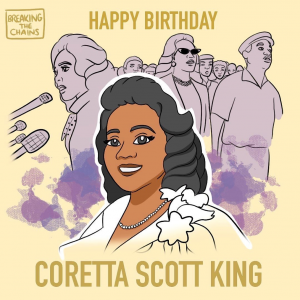
I thought the collaboration between artists inside the U.S. and artists in Cuba was so great, because you see that the distance between regular working class artists doesn’t matter. They still come together for the same principles and for the same ideals. I feel that when, for example, artists in the US and artists in Cuba come together to create displays of revolutionary spirit, that just shows the solidarity between working class people of two different countries. And it shows that it’s impossible to contain that revolutionary spirit. It can’t be contained to Cuba.
What it means to be a revolutionary Cuban in the United States, for me, it means that I’m very lucky to be in the belly of the beast, how Che said. Castro and Che, they always believed that people here in the imperial core could win the same way that revolutionaries won in Cuba. So I always carry that determination and faith with me.
I have to take on the internationalist duty of helping people in the United States. Just because my heart is in Cuba, it does not mean that my actions are only to help Cuba, because I understand that the working class people in the United States and in Cuba are one in the same. To me, this means taking care of people here in the United States, trying to help them improve their lives. Just earlier today, I was out protesting for universal healthcare in California, and getting people to sign up and learn more about the [healthcare] bill and why healthcare is a human right that all people around the world deserve.
PD: Could you tell me about the process of creating the artwork? What ideas did you start out with? What ideas did you end up going with? How did you come to how you composed the artwork? What were the artistic decisions that you made?
CV: I could only use two colors in total. I was trying to figure out what I wanted those two colors to be, because I wanted to present something positive, but also something revolutionary. So I chose the color green, at first, a lighter shade of green because I find it to be a color that represents hope. But then I also put it alongside the color of red, because red to me is a very revolutionary color.
I feel like most people, they might think of the colors red and green in relation to Cuba, and think, militant or the military uniforms that Castro and Che used to wear. But when I was depicting it in this, I wasn’t thinking in that instant about war or military. Even though [Cuban revolutionaries] had militant colors on, they were fighting for a sovereign Cuba, a Cuba with a better future, with health care, with education, with independence. [A Cuba] that doesn’t send bombs to other countries or entities engaged in war, but instead sends doctors and medicine.
And at first, I was only going to make art in relation to Soberana, the vaccine. But I realize there’s so much more that has been accomplished out of Cuba’s sovereignty, like industrialization and agriculture. I realized that I can’t limit sovereignty to just the present vaccine success. I had to include all of the industries.
And I wanted to emphasize in my artwork that Cuba will always persist, and it will always continue to live, because the United States is always saying, Cuba is a failed state, that it’s going to fall. They’ll tell people here in America that there’s a protest in Cuba, and it means that this is the end of Cuba. That’s what the United States is constantly thinking about, the end of Cuba.
So I wanted to create media that shows the continuation of Cuba. At the bottom, I wrote, “Somos Fidel, Somos Cuba”. I remember when I first heard the phrase, “Somos Fidel”, I didn’t really understand what it meant. Here in the United States, they portray any kind of celebration of Fidel as a cult of personality. But later on, I came to embrace that phrase as I learned more and more about the people in Cuba and the revolutionaries there.
Because all the people in Cuba, they’re taking up the task that Fidel left them. Fidel wasn’t just one man who accomplished everything in Cuba. It was a united effort. It was a result of everyone, hundreds of thousands of people in Cuba coming together to make the country what it is today.
PD: How did you develop your drawing style? And can you tell me a bit more about the design choices in your piece?
CV: My style is typically cheery and a little bit cute. It is meant to make the viewer feel some kind of happiness. There is a lot to celebrate about Cuba’s sovereignty, I feel like the happiness is appropriate to display in the art.
Originally I was just going to leave the border blank and red. But, the other thing is, that when you’re making pro-Cuba art inside the United States, a general audience might look at it and not really understand the significance of the image, as opposed to a politically educated audience who, maybe if they already know about Cuba and its revolutionary history, there’s so much that they can appreciate, even without the surrounding text. But art should also be educational. And it should be very clear in its meaning, because there’s constant US propaganda to make art into something it’s not, and to make art counter-revolutionary. So I wanted to be sure that its revolutionary message was clear.
And I wanted to invite the audience, the viewer, to see the message and want to learn more. I also wrote [the text] in Spanish. I didn’t write it in English because I felt like the message was that I wanted other people, especially knowing that people in Cuba would see it, I wanted them to understand the art I made. Also I wanted so much of the immigrant population here in the United States to be able to see the art and understand it and appreciate it, especially because so many immigrants in the United States were also forced to come here to the imperial core because they were fleeing war in their countries, or fleeing poverty. And so much of that is caused by the US in Latin America.
PD: What do you think is the broader significance of projects like this one, for people’s movements around the world?
CV: I think it’s absolutely amazing that The People’s Forum is using the art as an opportunity to fundraise money for the Let Cuba Live campaign. That’s just completely amazing, the thought that our art can directly contribute to life in another country and to survival.
I also feel like our artwork here sends a message across the United States and to the world that inside the imperial core, there is a beating revolutionary heart. You were telling me how there’s a lot of Cubans who live in the United States, and they’re often given the spotlight to say so many negative things. But this project right here, it was really able to move the spotlight onto us, and it was able to show the solidarity that people in the United States have with Cuba. It shows that the United States, the people who live inside it, they are not docile. They’re not weak or quiet living under oppression, they’re very loud and also very imaginative and creative about the world we can have and who we can share that world with. Our art really shows that we want to be able to share a better world with Cuba.
You can find Carolina on Instagram @linavaart.
